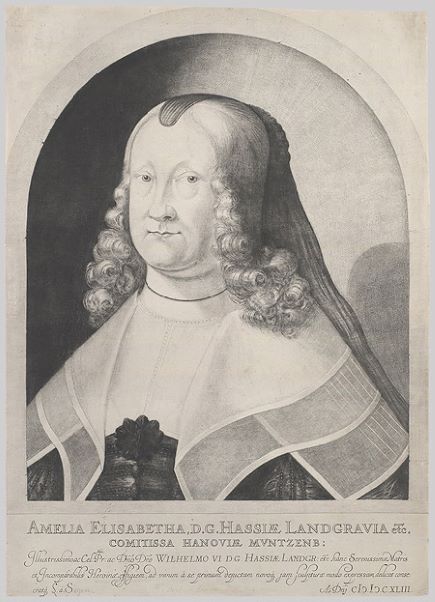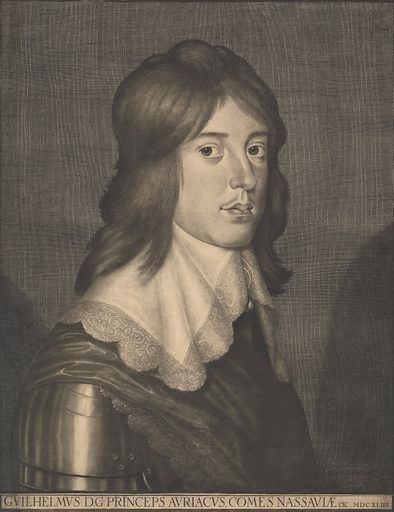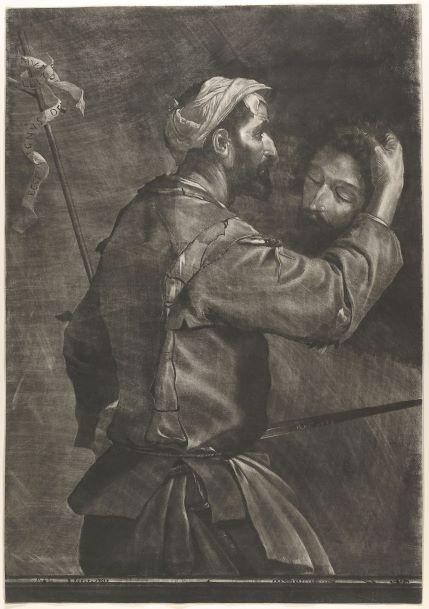What is the mezzotint printmaking process?
Keep Ludwig von Siegen in mind since he created one of the most complex printing methods—the mezzotint—in the first half of the seventeenth century.

It wouldn't be easy to name a Colonel who would be remembered by people all over the world. Maybe we should think of Colonel Muammar Gaddafi, the terrible leader of Libya, or the main character in Gabriel Garcia Marquez's short story "Nobody Writes to the Colonel".
But there is another colonel, or lieutenant colonel, whose name is worth remembering. His name is Ludwig von Siegen, and he invented one of the most advanced printing presses, the mezzotint, in the first half of the seventeenth century.
Not every soldier can boast of discoveries in the arts. Even an officer who graduated from a military academy is unlikely to have done anything more than a watercolor of battlefield notes. However, the case of the hero of our story is just incredible enough to warrant special attention.
Detailing the life of Ludwig von Siegen
There is no comprehensive information on Ludwig von Siegen's life, but it is reasonable to assume that the well-educated aristocrat became involved in active warfare. This is, after all, evidenced by von Siegen's military rank.
Landgrave Wilhelm V dies in 1637. His successor, Wilhelm VI, is only 8 years old at the time, so his mother, Amalie Elisabeth von Hahnenau-Minzenberg, becomes regent until he reaches the age of 21 (1650). Ludwig von Siegen appeals to her for a post at the Court of Kassel.
Amalie Elisabeth appoints the Lieutenant-Colonel to the post of chamberlain to Wilhelm VI. Around 1641 Ludwig von Siegen decided to convert to Catholicism, a rather strange and bold move in the strictly Calvinist Court of Kassel in the context of the Thirty Years' War.
After the ensuing disagreements at court, Ludwig follows in his father's footsteps and emigrates to Holland. He moves to Amsterdam, where he formally converts and yet maintains close relations with his former employers in Kassel.

Ludwig sends Amalia Elisabeth a letter on March 6, 1641, telling her that he has started working on her portico and that he would not say no to some help with money. The answer, on the other hand, seems to have been pretty quiet.
Ludwig finishes his painting of Amalia Elisabeth in August of the same year. It is the first piece of art we know of that was made with mezzotint. Ludwig sends it to Landgrave William VI and in the accompanying covering letter writes:
"In profound humility, I dedicate to Your Serene Highness, an extraordinary connoisseur of the arts, this rare and previously unseen work of art. There will be no engraver or artist who can explain, or guess, how this work was made, and as your Serenity well knows, there are only three generally recognized methods of engraving, namely: the first is engraving and carving, the second is an acid etching, or sharpening, and the third is a rarely used method, stippling, which is, however, so difficult and difficult an activity that few practice it. My method is completely different - you can see tiny dots, but not lines. However, if certain areas of this work appear to be crossed out, they are still dotted throughout, which I do not wish to conceal from Your Serene Highness, who knows the arts so well."
And indeed, Ludwig von Siegen's portrait of Amalia Elisabeth shows solid areas of deeply saturated shadow and smooth tonal transitions. This was impossible to achieve with classical engraving methods. Previously, volume and luminosity were created by gradations of line and its density. In his letter, von Siegen doesn't reveal how he made this effect or what tools he used, but any expert on mezzotint would agree that the work uses tools that his followers later patented.

No one knows for sure what made Ludwig von Siegen make his groundbreaking discoveries, so we can only guess. The lieutenant colonel's education at Kassel's liberal Moritz College and his time in Amsterdam, the center of art and fun, where he almost certainly saw Rembrandt van Rijn's etchings, both played a role. The Italian Baroque painter Giovanni Benedetto Castiglione, in his quest for the monotype, was exploring the problem of light at the same time as von Siegen.
Thanks to its tonal possibilities, the mezzotint quickly became popular in the reproduction of oil paintings and book publishing.
Ludwig von Siegen's subsequent works are also associated with reproductions of paintings: in 1643-1644 he produced a portrait of Elisabeth Stewart, portraits of William II of Orange and his wife Maria Henrietta, and in 1654 von Siegen produced a portrait of Ferdinand III, Emperor of the Holy Roman Empire.
Outside the portrait genre, von Siegen also turned to religious subjects, for example making a copy of Anibal Karachi's painting The Holy Family with John the Baptist. In total, seven mezzotint plates by the hand of the Lieutenant-Colonel are known, in addition to medals and oil paintings.

Prince Rupert of the Rhine also developed mezzotint
Prince Rupert, a veteran of the English Civil War and commander of the Royalist cavalry, is also important in the development of the mezzotint technique. A cousin of William VI, Landgrave of Hesse-Kassel, the militarist with an interest in the arts received information about the new printing technique from his relative.
After the restoration of the Stewarts and Prince Rupert's return home, he tells the publicist John Evelyn of his findings. The man does not hesitate to make it known to the general public, describing in exquisite detail that a new printing press, the Mezzo Tinto, has just been invented and that its inventor is, of course, Prince Rupert.
In the decades that followed, the mezzotint victory parade and the mania for collecting offprints of this printing press became almost an obsession in England. This continued until the early 19th century when a Munich playwright came up with a new invention, but that is another story.




